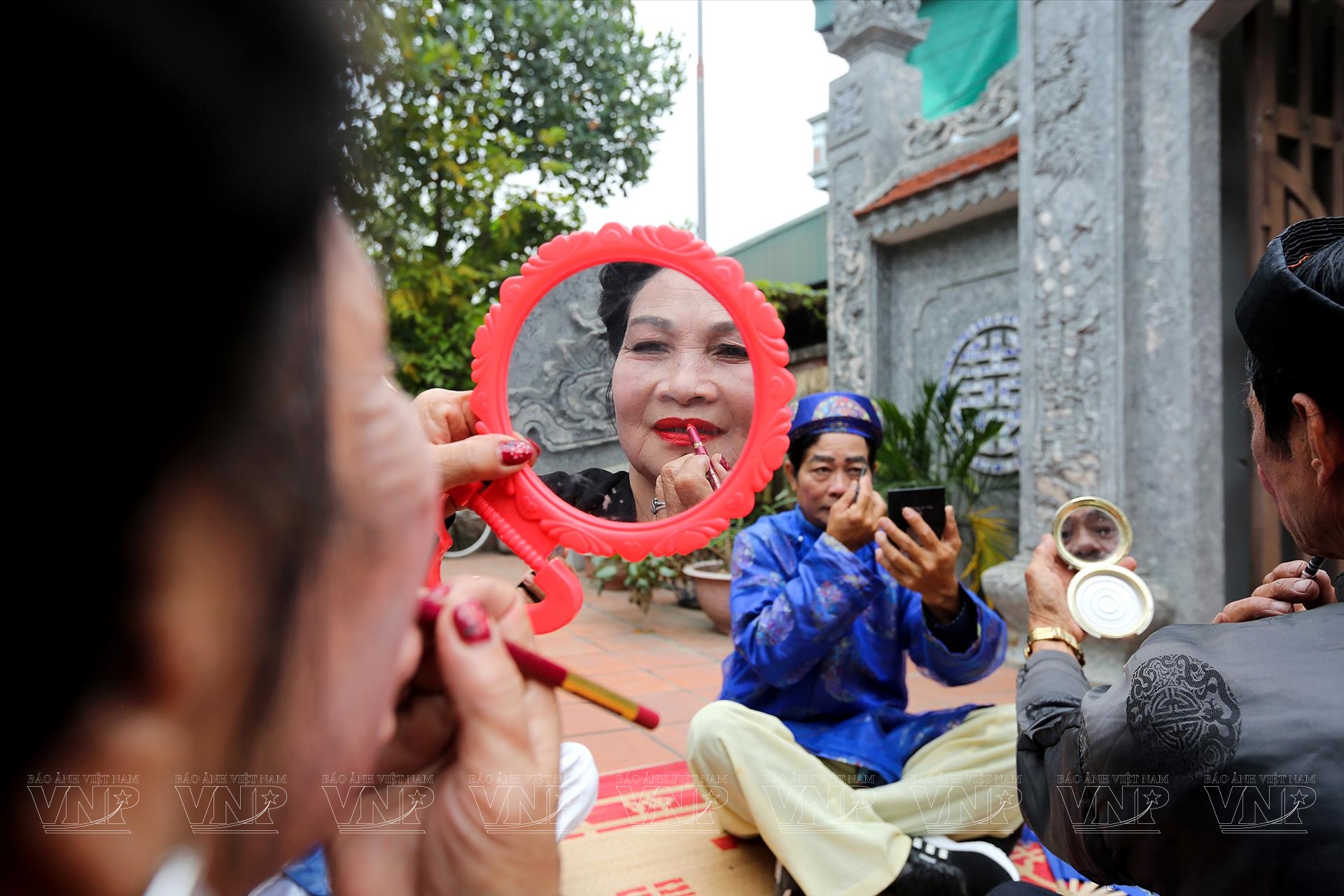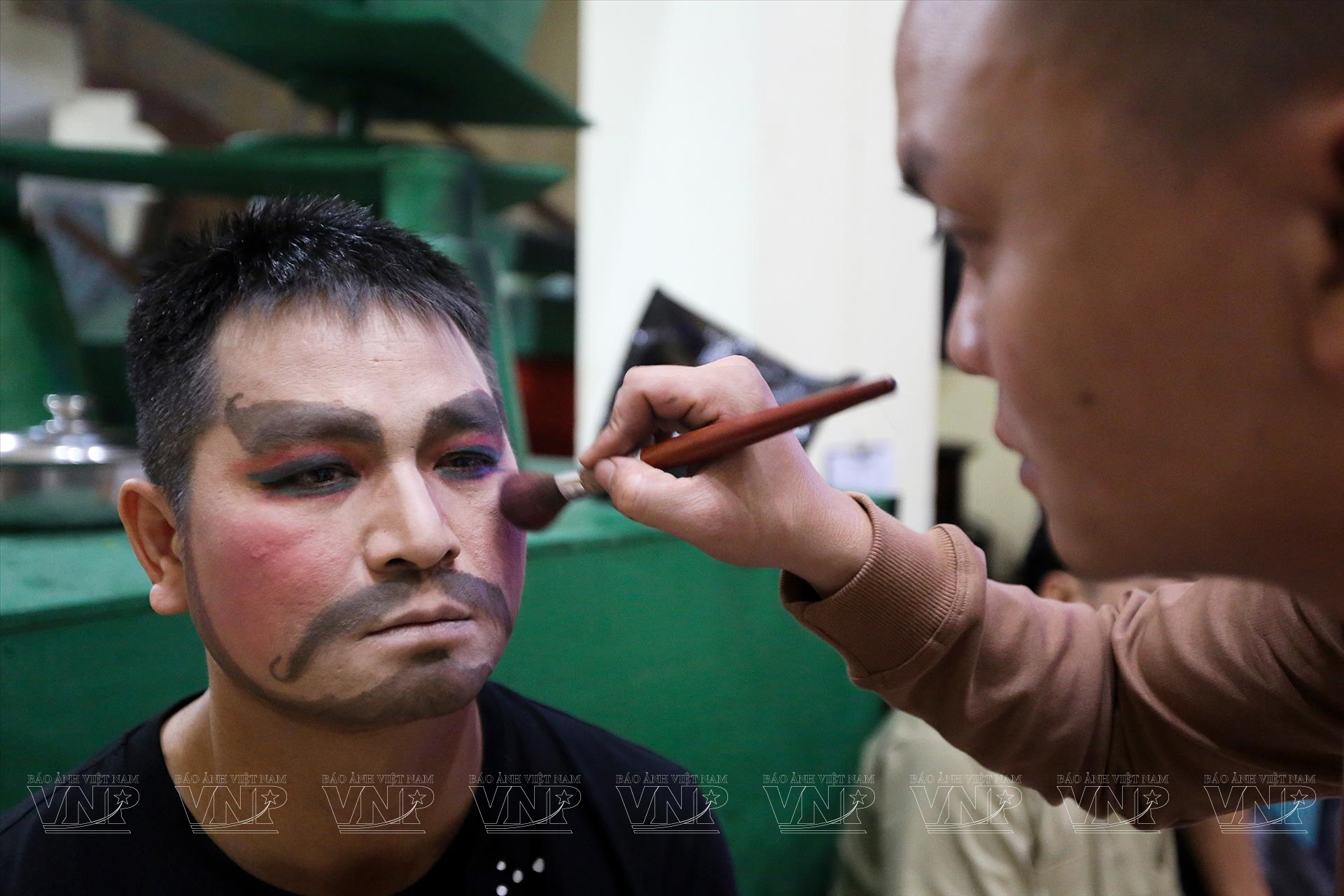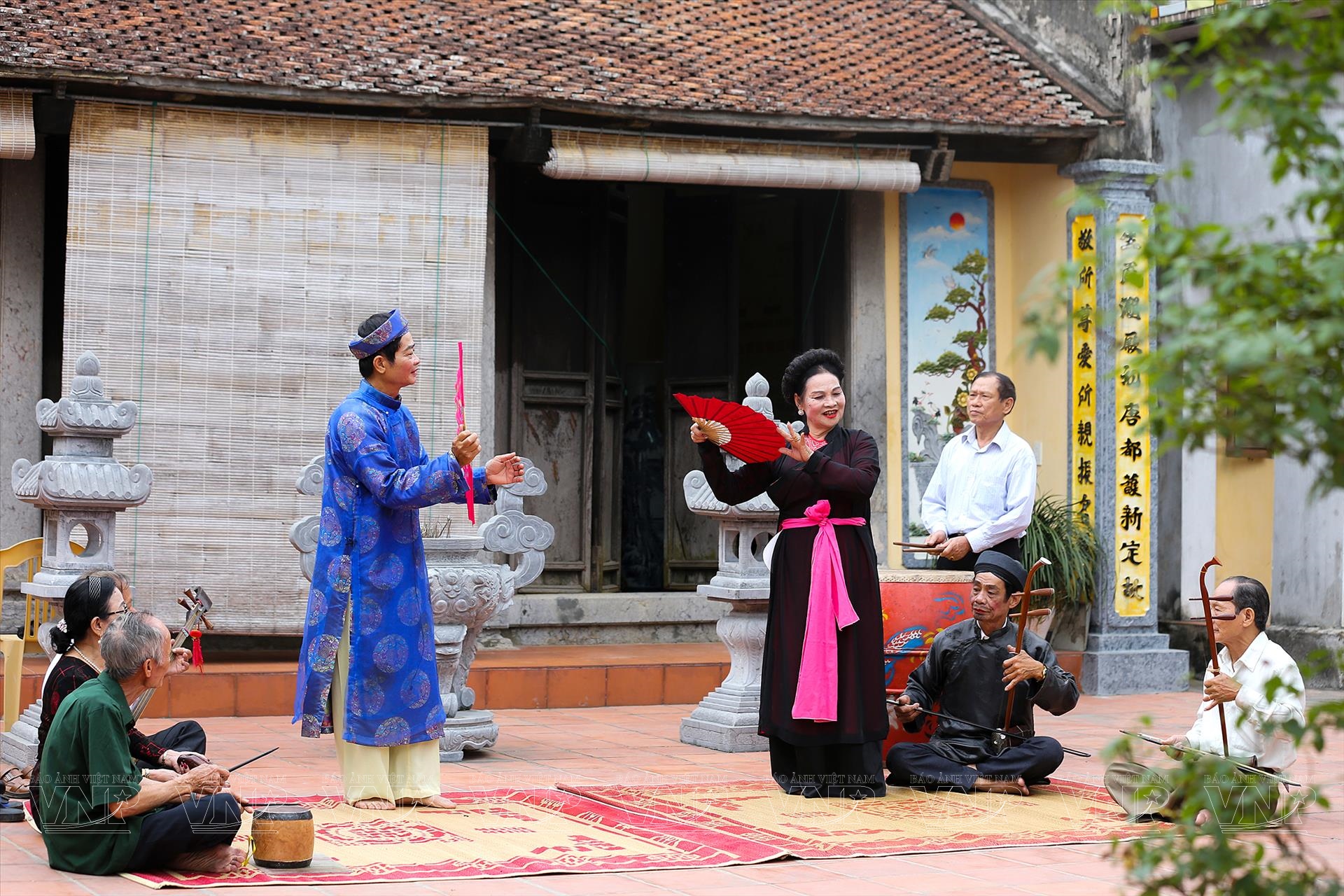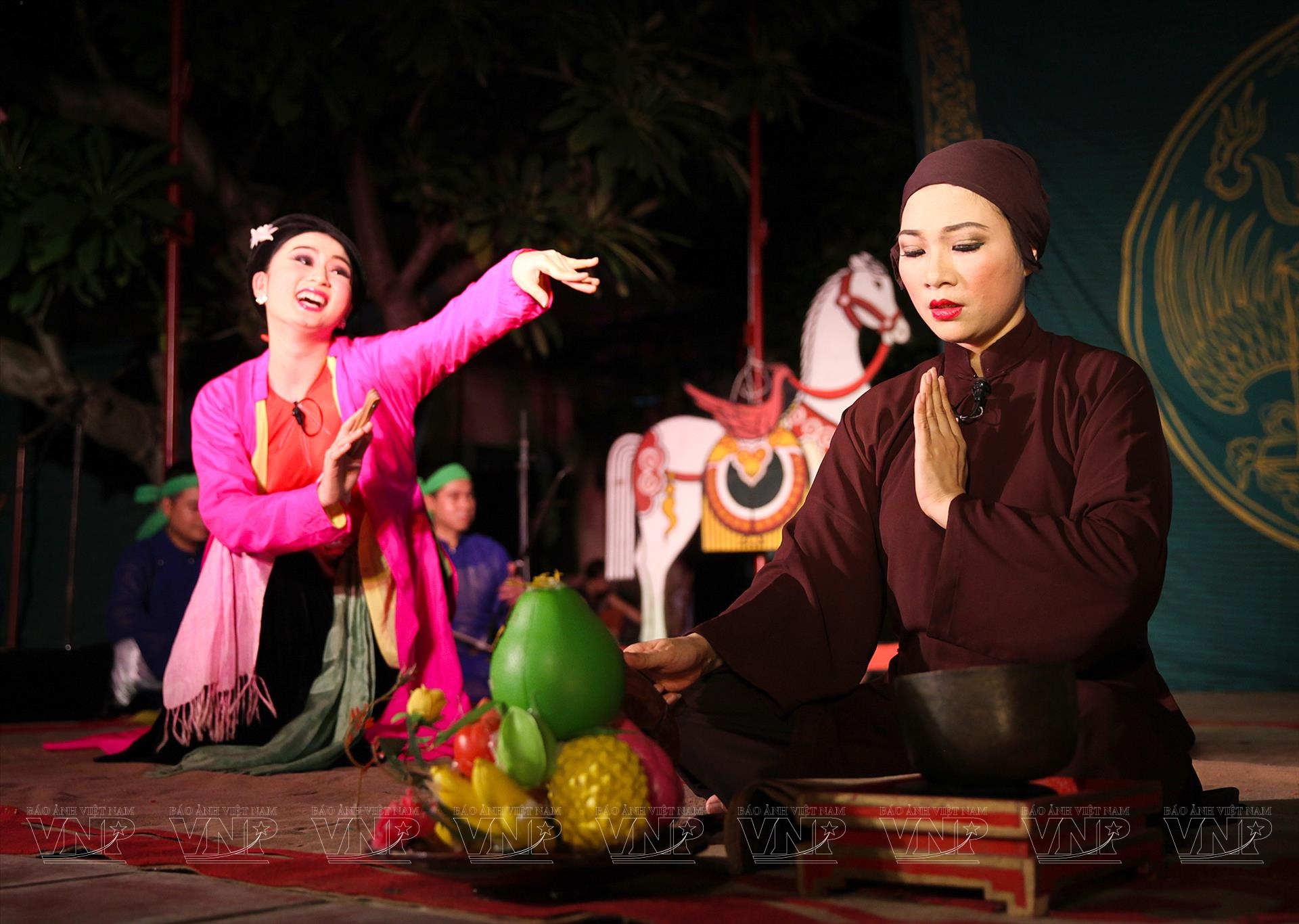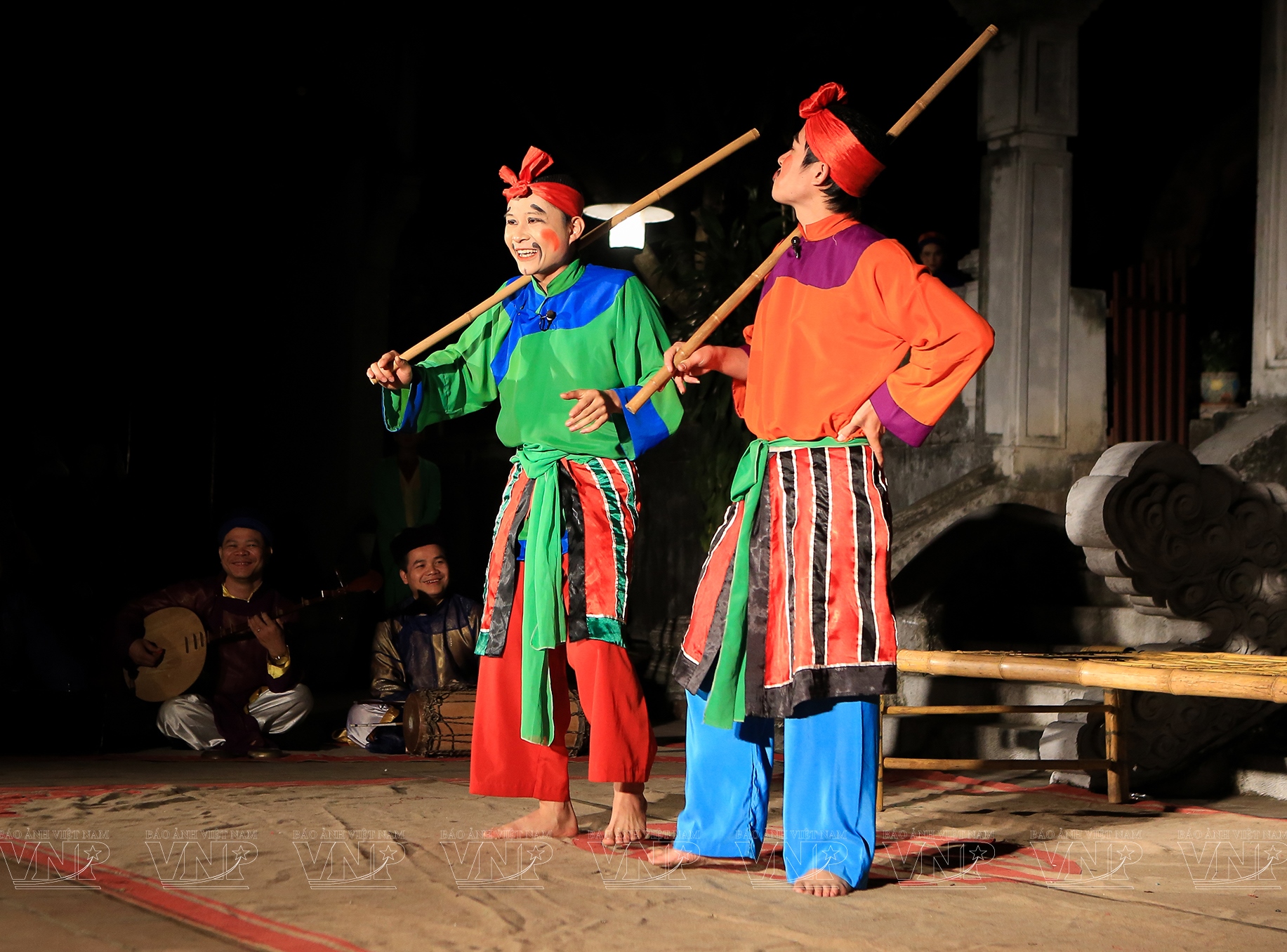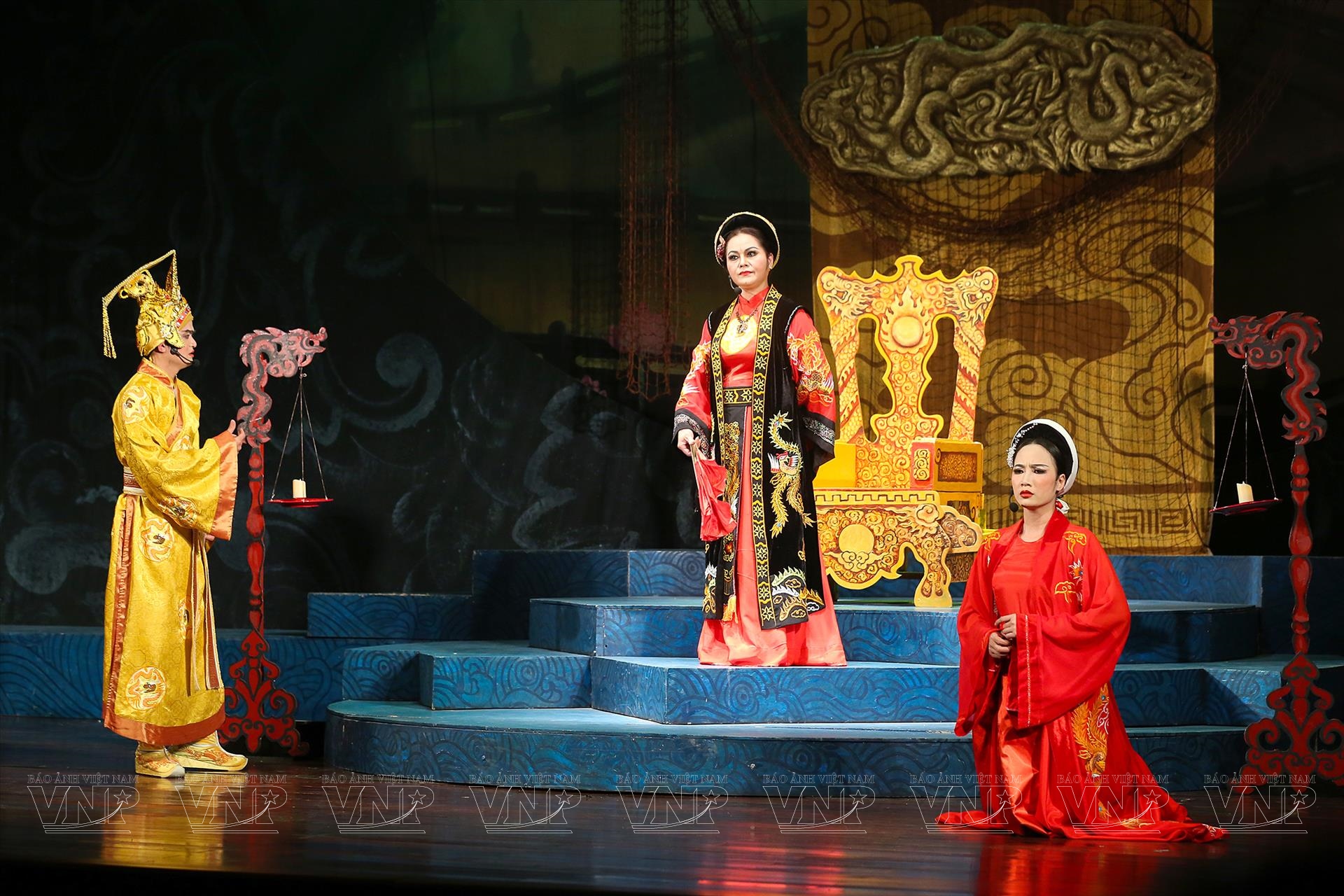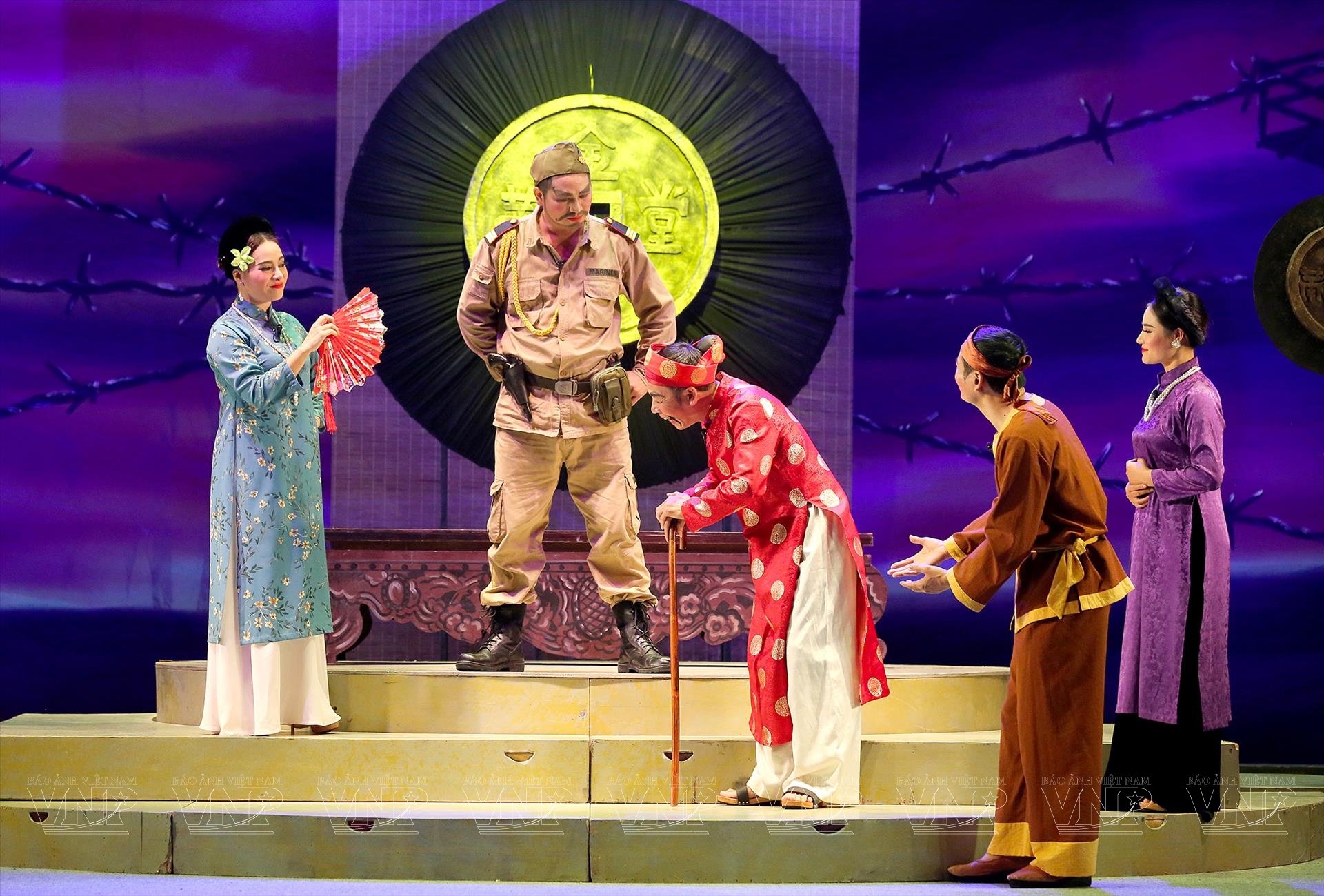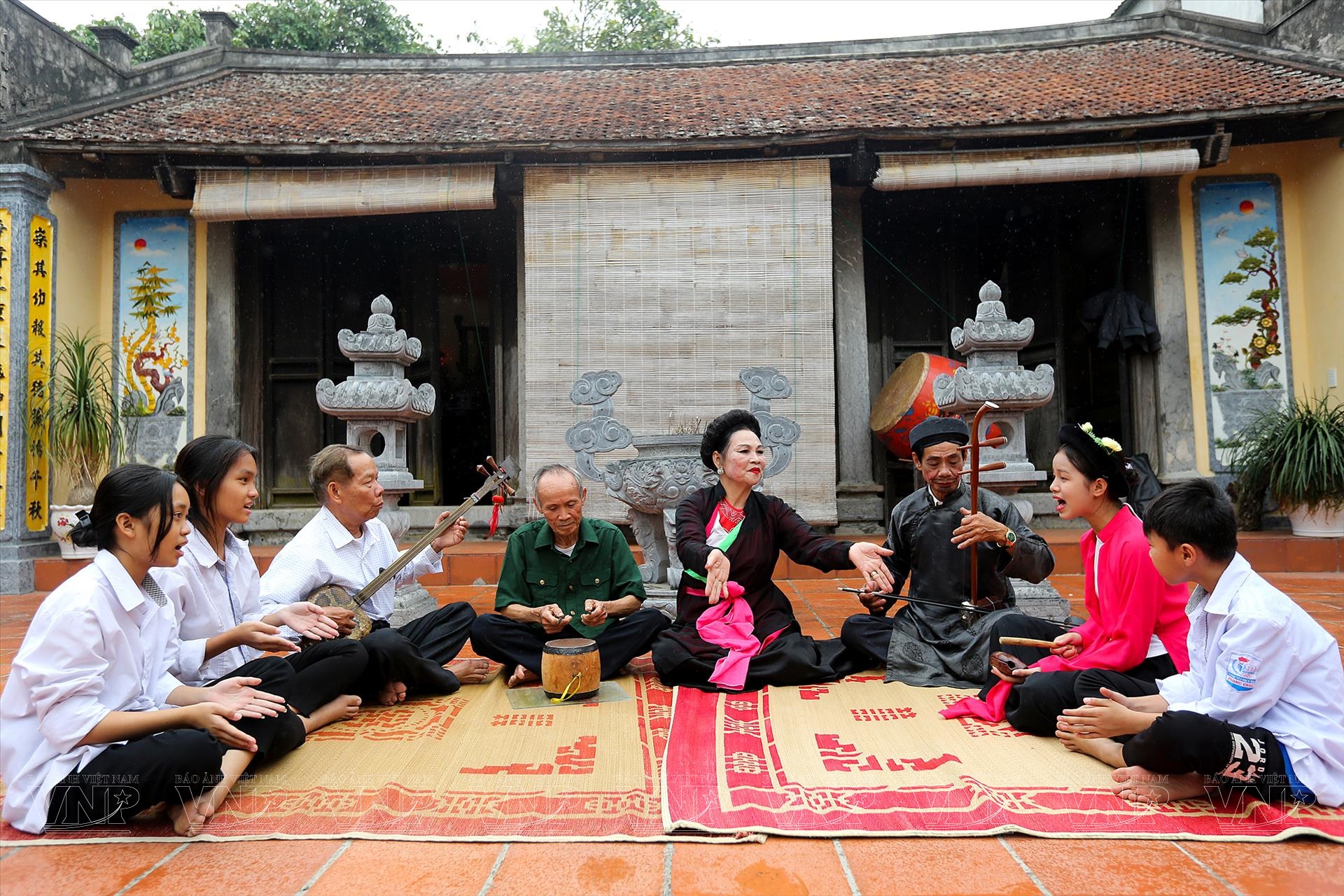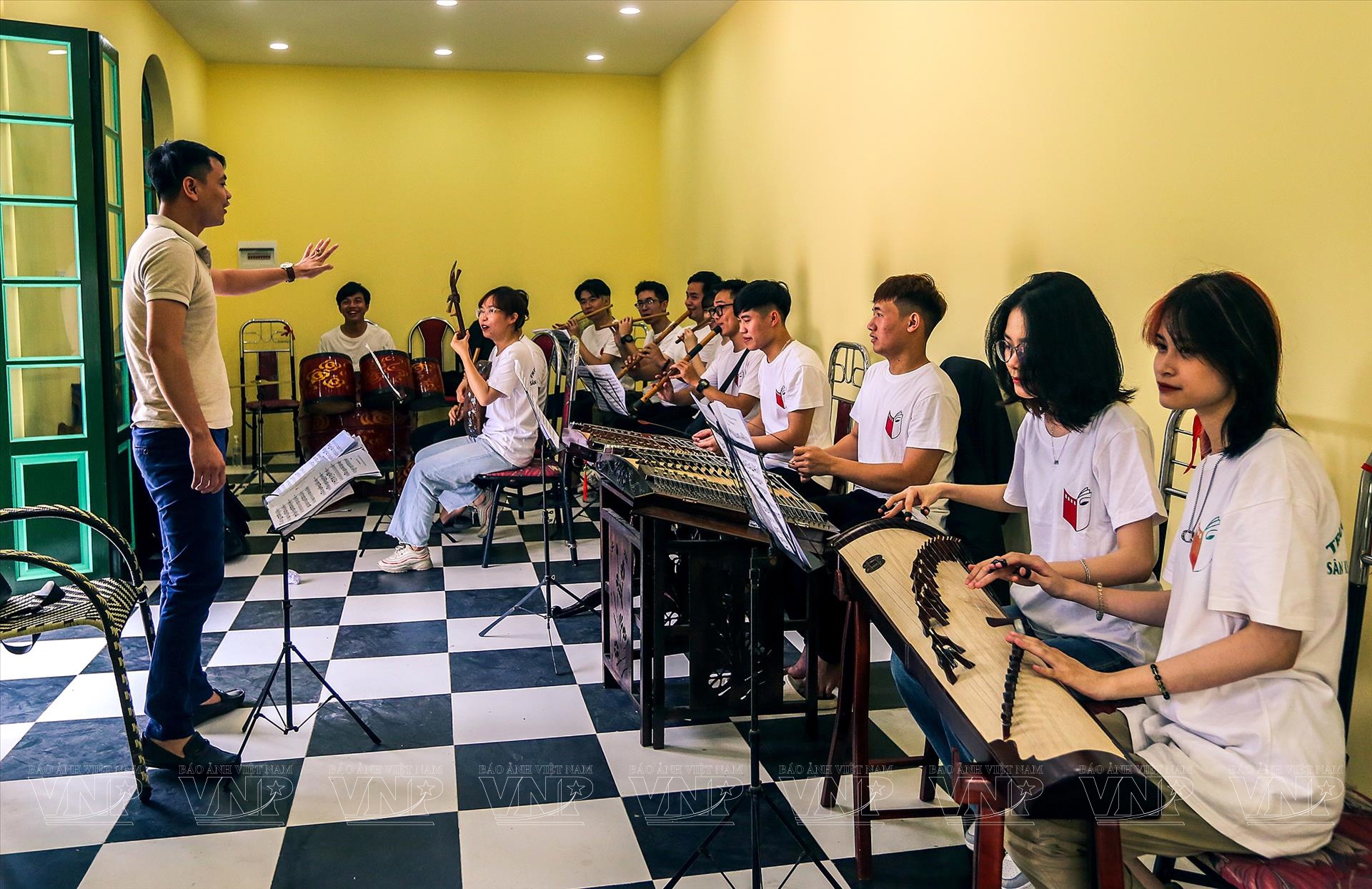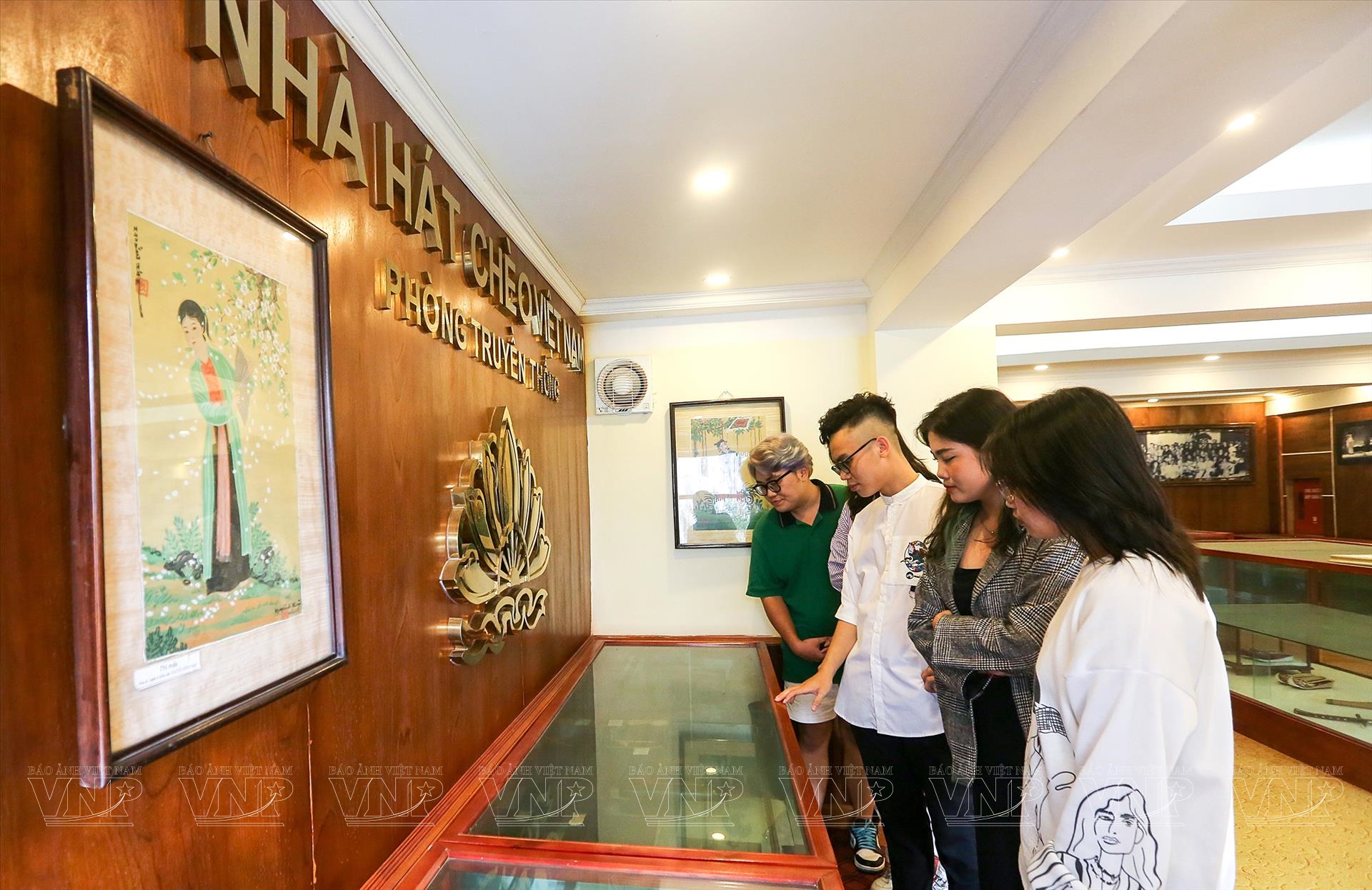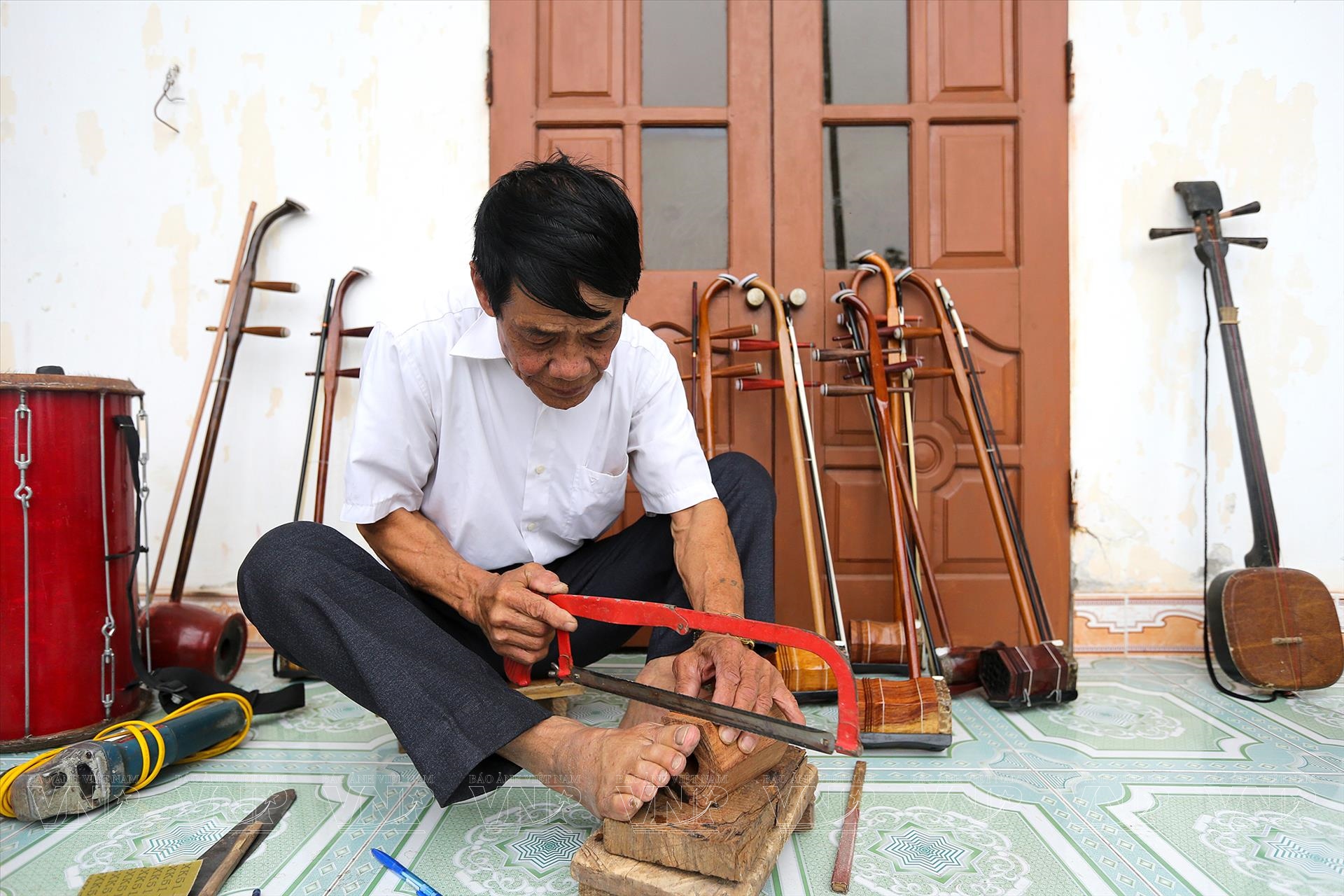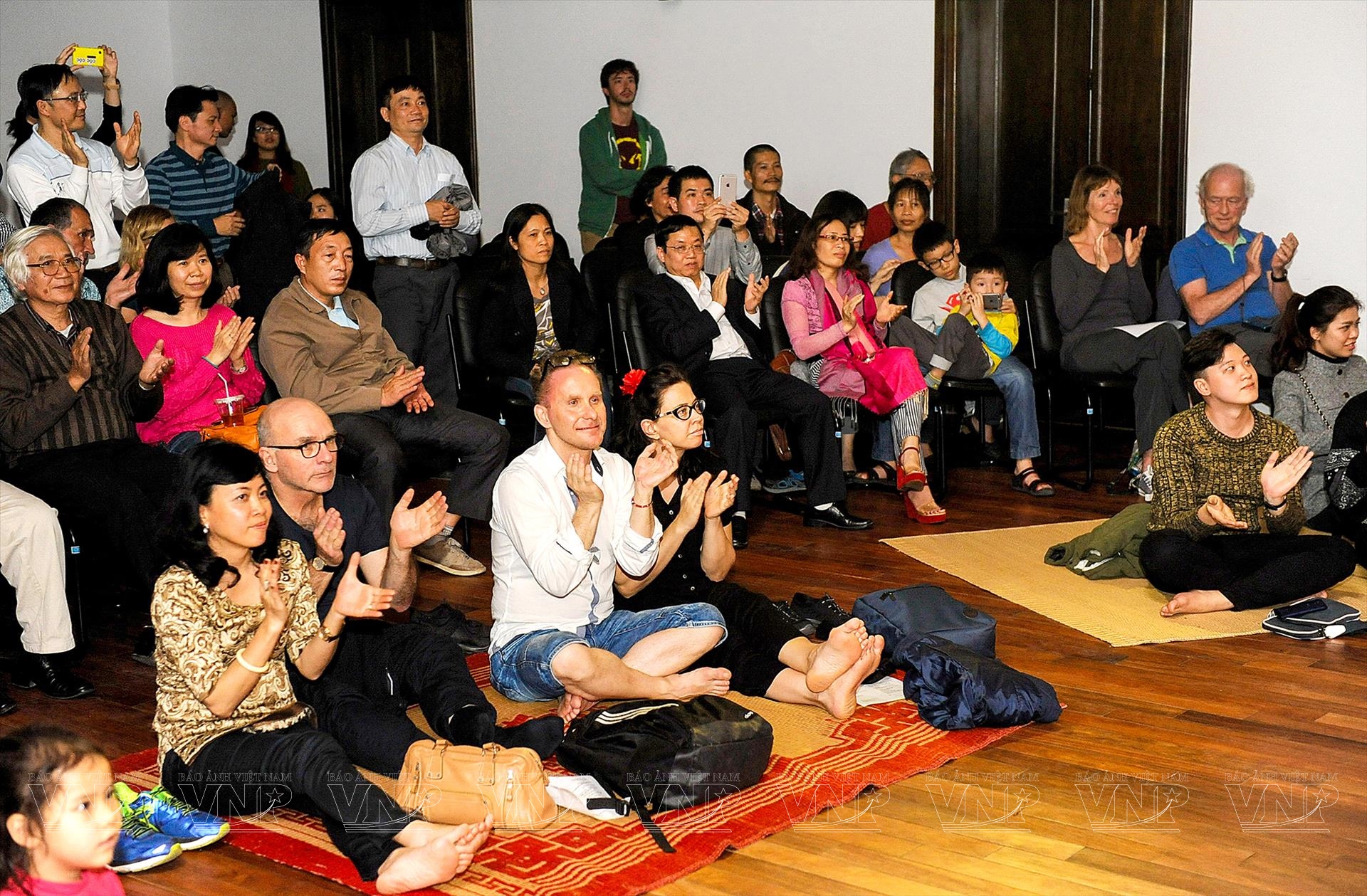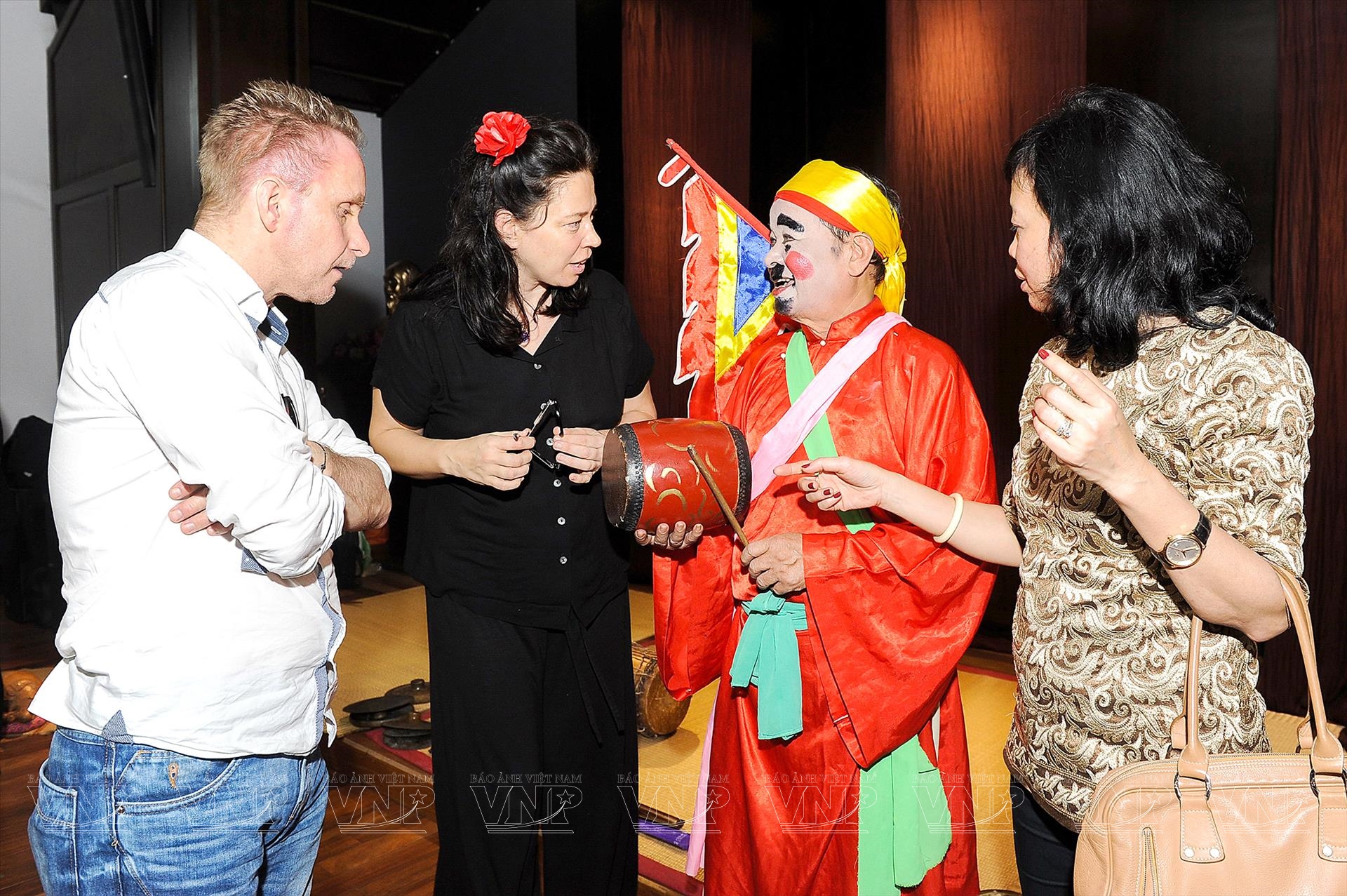Cheo - A Traditional Vietnamese Stage Art
Cheo is a form of traditional Vietnamese stage art which holds an important position in the cultural and spiritual life of the Vietnamese people.
Originated in the 10th century from folk music and dance, this Vietnamese traditional opera is popular in areas around the Red River Delta. With every passing year, the art has gradually spread to the Northern midland and mountainous regions and the North Central Coast. With unique artistic values, a dossier for Cheo is being compiled to seek UNESCO recognition as a cultural heritage of the world.
From the Cheo San Dinh Stage to the Cheo Modern Stage
According to many documents, Cheo originated in the capital of Hoa Lu (Ninh Binh) in the 10th century and was founded by Pham Thi Tran, a famous dancer in the Dinh royal palace.
From Hoa Lu, the art of Cheo flourished throughout the Northern Delta, especially in Thai Binh, Hai Phong, Ha Nam, Hung Yen and Hanoi. Then it gradually spread to the northern mountainous regions and the North Central Coast.
Although Ninh Binh is known as the ancestral land of Cheo, Khuoc village in Phong Chau commune, Dong Hung district, Thai Binh province is the place where there is the most Cheo performances and many unique Cheo plays are still preserved.
Khuoc has been one of seven popular Cheo regions in the north since the 19th century. In the past, the Khuoc village artists performed Cheo in the royal palace and in many other regions across the country.
According to Bui Van Ro, chairman of the Khuoc Village Traditional Cheo Club, during the subsidized period when the economy was still in difficult times, most families could only listen to Cheo singing through the Voice of Vietnam. It was very difficult to have a chance to watch live performances of professional Cheo troupes. During their leisure time, the villagers often spread mats in the middle of the communal house to sing Cheo to satisfy their passion. These amateur Cheo artists have contributed to the preservation and development of the traditional Cheo art of Khuoc village in particular and Vietnam's traditional Cheo in general.
In the past, Cheo was often performed in the communal house yard, pagodas and houses of noble families. A Cheo stage was usually just a mat spread in the middle of the yard with a small curtained hanging behind it. Artists put on Cheo plays on the mat while musicians sat on both sides of the mat, and the audience watched the performances from the front and two sides of the stage.
Different from other folk-art forms, Cheo is a form of Vietnamese traditional stage art imbued with the national characteristics of a unique combination of singing, dancing, music and drama. Cheo is a singing style which can be solo, a duet or a choir. The melody of Cheo plays is very suitable for the natural voice and language of the Vietnamese people. A Cheo play often lasts about 2 hours. A performance requires the artists to have the skills of singing, dancing and performing with background music of drums, mo (wooden tocsin), sao (bamboo flute) and nhi (two double-stringed instruments).
The content of the plays often describes the simple life of farmers, herdsmen, craftsmen, and landowners. It praises virtues, criticizes bad habits and vices, fights against injustice and shows love and compassion, tolerance and forgiveness.
When watching Cheo, one not only enjoys relaxing moments full of laughter, but also has the opportunity to experience and think of life. In Cheo, characters are often conventional and highly literary. There are also clowns, a supporting but quite important role.
Cheo clowns or buffoons often comment on the action in an amusing or satirical way as well as mocking pompous, ridiculous or dishonest characters like kings and mandarins.
Throughout its long history, the Cheo stage has also gradually changed. Today, Cheo is not only performed on a small stage of communal houses, but also on large stages with the support of modern sound and light systems.
The theatrical trend has also led to the formation and development of modern Cheo plays with contents of hot topics and showing modern life that make it easier to attract viewers.
The 2022 National Cheo Festival was an example of having many quality plays in both content and art, attracting audiences by its creativity and novelty.
Efforts to Make Cheo Recognized as Cultural Heritage of the World
As the cradle of Cheo art in the Northern River Delta, well-known artists in Khuoc village have taught the basic skills of traditional Cheo singing to children from 6-15 years old on weekends or in the summer with the aim of keeping the traditional Cheo art hand.
Pham Thi Hang (14 years old) said, "Since I was five years old, I heard my grandfather and father sing Cheo lyrics which are inspiring, so I love the art. Now, I am studying many ancient Cheo plays from the village artists. I really hope that our generation can bring Cheo from Khuoc village to the audiences in far places".
The Faculty of National Drama and Theater of Hanoi University of Theater and Cinema is the cradle of training Vietnamese Cheo artists such as Xuan Hinh, Quoc Truong, Thanh Ngoan, Tu Long and Thu Huyen. This is the place to train the art of Cheo methodically and professionally. Students majoring in Cheo singing will be trained for four years to have enough basic knowledge and foundation for Cheo performing such as singing, dancing, and acting techniques. Cheo musicians will learn the basics of musical instruments and perform with the play. It is the place to train and provide the main actors and artists for Cheo troupes and Cheo theaters across the country.
Along with the training of the next generation of Cheo artists, the introduction of Cheo art into the contemporary cultural space to help more people understand and love the art has also received a lot of attention. Recently, a group of young people who love traditional Vietnamese theater experimented with some community projects for Cheo. For example, the project of "The sound of Cheo drums" at Kim Lien communal house (Hanoi) was organized by a group of young people who share the same passion for traditional Vietnamese culture and the artists of Vietnam Cheo Theater.
The show was divided into three parts. The first introduced a Cheo village to help the audience have a basic understanding of the five typical characters in Cheo. In the second part, the audience participated in the play to help them understand the characters. In the third part, the artists performed the Cheo excerpt of "Quan Am Thi Kinh".
In addition to the above projects, some other young people have also brought Cheo closer to contemporary life through the application of digitization in the design of paintings of Cheo characters with a modern artistic style.
Truong Thi Hong Hanh, Director of the Department of Culture, Sports and Tourism of Thai Binh province, the unit assigned to coordinate with other agencies to create the dossier for Cheo arts of the Red River Delta, said that it will complete the work to submit to UNESCO for recognition as a world cultural heritage by 2025.
To promote the popular traditional of Cheo, it needs the attention of the State and the active participation of the people in singing, performing and preserving. It is a great effort to show that Vietnam is willing to do its best to make Cheo soon be recognized by UNESCO and honored as a world cultural heritage./.
.
Story: Ngan Ha - Photos: Khanh Long - Translated by Hong Hanh

